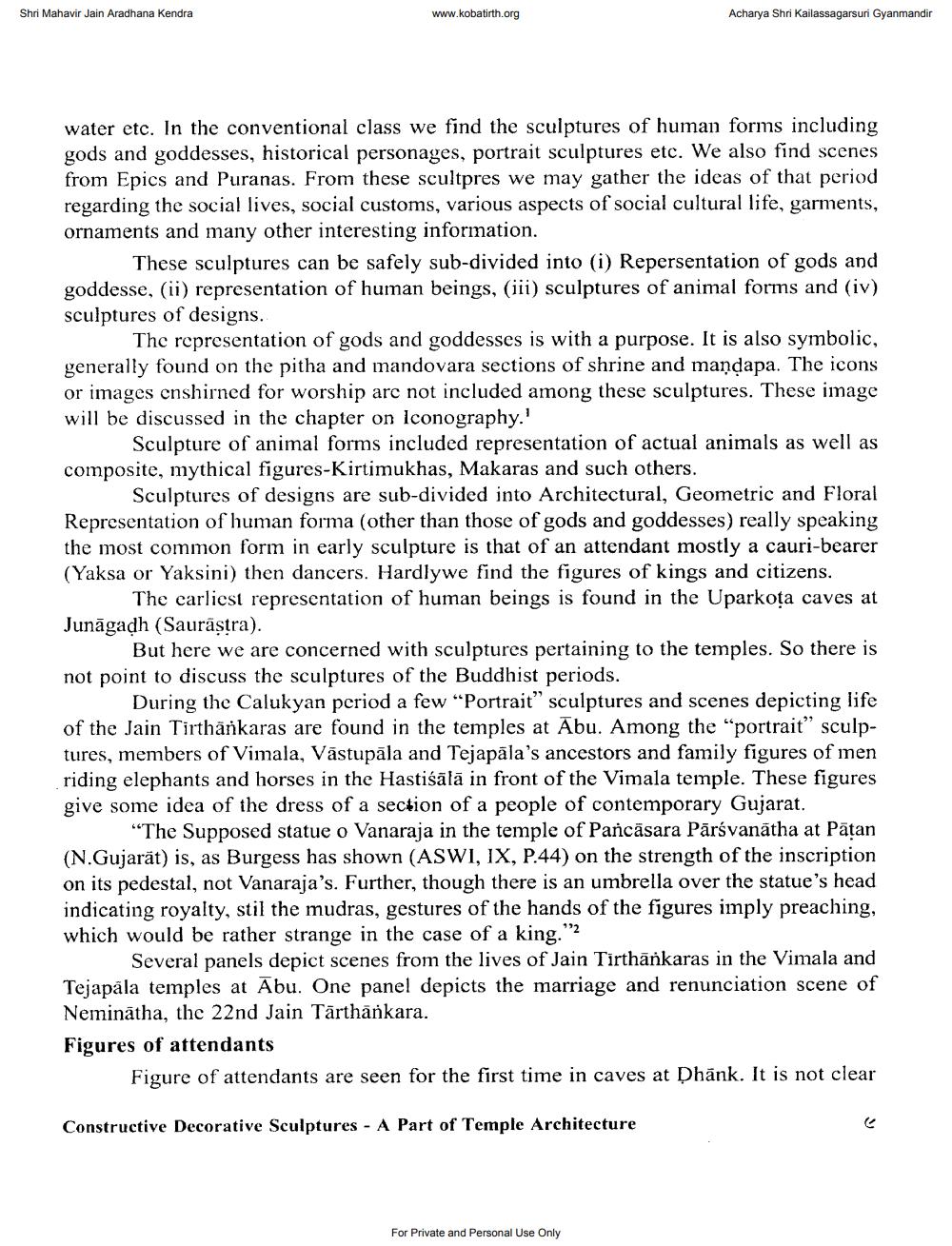________________
Shri Mahavir Jain Aradhana Kendra
www.kobatirth.org
Acharya Shri Kailassagarsuri Gyanmandir
water etc. In the conventional class we find the sculptures of human forms including gods and goddesses, historical personages, portrait sculptures etc. We also find scenes from Epics and Puranas. From these scultpres we may gather the ideas of that period regarding the social lives, social customs, various aspects of social cultural life, garments, ornaments and many other interesting information.
These sculptures can be safely sub-divided into (i) Repersentation of gods and goddesse, (ii) representation of human beings, (iii) sculptures of animal forms and (iv) sculptures of designs.
The representation of gods and goddesses is with a purpose. It is also symbolic, generally found on the pitha and mandovara sections of shrine and mandapa. The icons or images enshirned for worship are not included among these sculptures. These image will be discussed in the chapter on Iconography.
Sculpture of animal forms included representation of actual animals as well as composite, mythical figures-Kirtimukhas, Makaras and such others.
Sculptures of designs are sub-divided into Architectural, Geometric and Floral Representation of human forma (other than those of gods and goddesses) really speaking the most common form in early sculpture is that of an attendant mostly a cauri-bearer (Yaksa or Yaksini) then dancers. Hardlywe find the figures of kings and citizens.
The carliest representation of human beings is found in the Uparkoța caves at Junāgadh (Saurästra).
But here we are concerned with sculptures pertaining to the temples. So there is not point to discuss the sculptures of the Buddhist periods.
During the Calukyan period a few “Portrait” sculptures and scenes depicting life of the Jain Tirthänkaras are found in the temples at Abu. Among the “portrait" sculptures, members of Vimala, Vāstupāla and Tejapāla's ancestors and family figures of men riding elephants and horses in the Hastiśālā in front of the Vimala temple. These figures give some idea of the dress of a section of a people of contemporary Gujarat.
“The Supposed statue o Vanaraja in the temple of Pancāsara Pārsvanātha at Pātan (N.Gujarat) is, as Burgess has shown (ASWI, IX, P.44) on the strength of the inscription on its pedestal, not Vanaraja's. Further, though there is an umbrella over the statue's head indicating royalty, stil the mudras, gestures of the hands of the figures imply preaching, which would be rather strange in the case of a king."
Several panels depict scenes from the lives of Jain Tirthānkaras in the Vimala and Tejapäla temples at Abu. One panel depicts the marriage and renunciation scene of Neminātha, the 22nd Jain Tärthänkara. Figures of attendants
Figure of attendants are seen for the first time in caves at Dhänk. It is not clear
Constructive Decorative Sculptures - A Part of Temple Architecture
For Private and Personal Use Only




